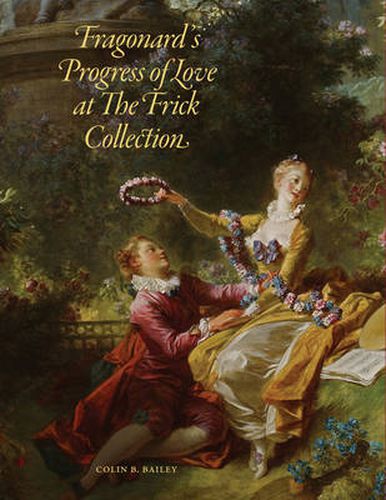Readings Newsletter
Become a Readings Member to make your shopping experience even easier.
Sign in or sign up for free!
You’re not far away from qualifying for FREE standard shipping within Australia
You’ve qualified for FREE standard shipping within Australia
The cart is loading…






This richly illustrated volume reveals the intriguing story behind the commission, rejection, and rehousing of Jean- Honore Fragonard’s Progress of Love, a series of 14 paintings considered by many to be the artist’s masterpiece. Fragonard (1732-1806) completed four large canvases for the comtesse du Barry’s pavilion at Louveciennes, but they were replaced and returned to the artist. In 1790 Fragonard moved them to his cousin’s house in Grasse, and over the course of the year painted two further large-scale works and 10 additional panels. With 140 colour images of the Fragonard paintings, details, shots of the room, plans, original sketches, and other comparative images, author Colin Bailey explores the commission of the four main panels, their original arrangement at Louveciennes and the possible reasons for their rejection. Equally enthralling is the history of how the paintings were rediscovered in the late 19th century and how they eventually came to The Frick Collection.
$9.00 standard shipping within Australia
FREE standard shipping within Australia for orders over $100.00
Express & International shipping calculated at checkout
This richly illustrated volume reveals the intriguing story behind the commission, rejection, and rehousing of Jean- Honore Fragonard’s Progress of Love, a series of 14 paintings considered by many to be the artist’s masterpiece. Fragonard (1732-1806) completed four large canvases for the comtesse du Barry’s pavilion at Louveciennes, but they were replaced and returned to the artist. In 1790 Fragonard moved them to his cousin’s house in Grasse, and over the course of the year painted two further large-scale works and 10 additional panels. With 140 colour images of the Fragonard paintings, details, shots of the room, plans, original sketches, and other comparative images, author Colin Bailey explores the commission of the four main panels, their original arrangement at Louveciennes and the possible reasons for their rejection. Equally enthralling is the history of how the paintings were rediscovered in the late 19th century and how they eventually came to The Frick Collection.